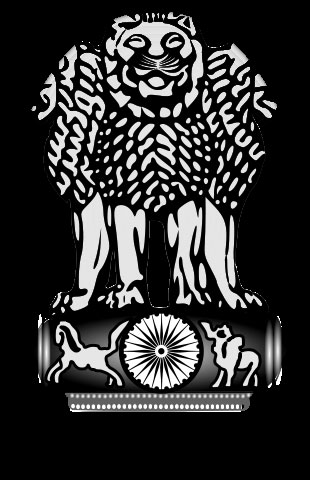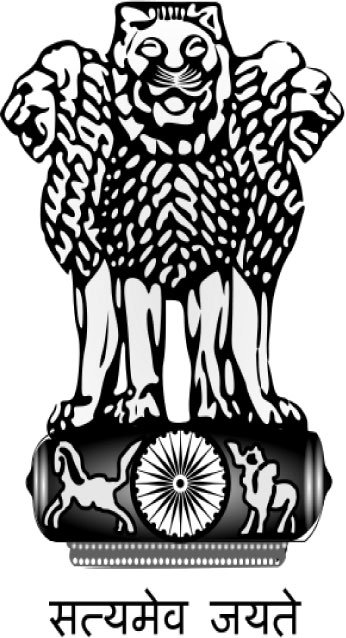
National Customs & Border protection are the first line of defense against the cross-border movements of counterfeits and pirated goods infringing intellectual property rights. Effective protection would help curtail the quantities of counterfeit goods circulating in international trade. Import of goods that infringe intellectual property into India is prohibited under the Customs Act, 1962. In view of the same, the government of India in 2007 had notified the ‘Intellectual Property Rights (Imported Goods) Enforcement Rules, 2007’ *IPR Rules 2007+ with a view to strengthen the statutory and executive guidelines provided for the protection of intellectual property rights at the borders. This was based on model legislation drafted by the Geneva based World Customs Organization. The IPR Rules, 2007, empowers the Custom Authorities to deal with counterfeit and pirated goods at its borders. The rules came into force on 8th May, 2007, the date it was published in the Official Gazette.
Further to the enactment of the IPR Rules 2007, The Central Board of Excise and Customs (CBEC) has implemented an IPR Module to facilitate right holders to file IPR notices which was notified to the general public vide CBEC Circular No. 41/2007-Customs, dated 29th October, 2007. The registration imposes an administrative duty on the Custom Department to protect the right-holder against violation of his IPR rights.
The IPR Rules 2007 relates to imported goods which infringe upon intellectual property rights. Infringing goods are defined as “goods which are made, reproduced, put into circulation or otherwise used in breach of the intellectual property laws in India or outside India and without the consent of the right holder or a person duly authorized to do so by the right holder”
The IPR Rules 2007 permits the right holders of the below mentioned intellectual property to record their rights under Indian Customs Act, 1962:
“Intellectual Property” means a copyright as defined in the Indian Copyright Act, 1957, trade mark as defined in the Indian Trade Marks Act,1999, patent as defined in the Indian Patents Act, 1970, design as defined in the Indian Designs Act, 2000 and geographical indications as defined in the Indian Geographical Indications of Goods (Registration and Protection) Act, 1999;
“Right Holder” means a natural person or a legal entity, which according to the laws in force is to be regarded as the owner of protected intellectual property right, its successors in title, or its duly authorized exclusive licensee as well as an individual, a corporation or an association authorized by any of the aforesaid persons to protect its rights.
“Intellectual Property Law” means the Copyright Act, 1957, the Trade Marks Act,1999, the Patents Act, 1970, the Designs Act, 2000 or the Geographical Indications of Goods (Registration and Protection) Act, 1999 ;
The grant of registration is subject to following conditions:
Registration can be electronically and would cover the following regions:
( see sub-rule(2) of rule 3)
Format for notice in respect of goods infringing intellectual property rights under Intellectual
Property Rights(Imported Goods) Enforcement Rules , 2007
(A) Office address:
(B) Residence address
(C) E-mail address
(D) IEC No
I/We declare that the particulars furnished above are true to the best of my/our knowledge and the documents enclosed herewith are genuine.
Signature of the right holder or his authorized representative
Office Seal
Place:
Date:
[F.No305/96/2004-FTT(part-I)]
(S.P.RAO )
Under Secretary to the Government of India
Excluded from the purview of the IPR Rules 2007 are baggage and De-minimis Imports. Wherein goods of a non-commercial nature contained in personal baggage or sent in small consignments intended for personal use of the importer are not subject to the above Rules.
Protection of action taken under the Rules.- Customs officers when acting in good faith and having followed the procedures set out in these Rules shall not be liable for:
Goods infringing intellectual property rights upon confiscation or seizure are destroyed or disposed by the Department after obtaining ‘no objection’ certificate from the right holder.
Period of raising objection by the right holder to the mode of disposal is 20 days.
Goods infringing intellectual property rights are not to be re-exported in unaltered state.
Altacit Global are Strategic Consultants for Corporate, Legal and Intellectual Property (IP) matters. Two of the world’s leading guides to the legal profession i.e. The Legal 500 & Chambers and Partners in 2008 have rated ‘ALTACIT GLOBAL’ amongst the top Intellectual Property Firms in India. Legal 500 has done so for the fourth consecutive year (2005/06, 2006/07, 2007/08 & 2008/09). We have a strong international flavor in our working practices addressing needs of individual industry groups. We continuously strive to help our clients identify and capitalize on value opportunities and business decisions. Our aim is to provide our clients a consistently high standard of service at competitive compensations ensuring a value for money. In our core team are professionals who come from multidisciplinary and diverse backgrounds such as science, engineering, law, chemical, pharmaceutical, medical and business administration.
Our firm is actively involved in all aspects of Intellectual Property be it registration, prosecution and enforcement. Our firm works with the entrepreneurs, small, medium and large Corporates, whom we help in registering and protecting their IP both in India and Internationally. Our office is situated proximately to Indian Patent Office Branch in Chennai and we would be able to help you even in cases of urgent filing.

The Emblem of India is an adaptation from the Sarnath Lion Capital of Emperor Ashoka. In the original there are four Asiatic lions, standing back to back, mounted on a circular abacus with a frieze carrying sculptures in high relief of an elephant, a galloping horse, a bull and a lion separated by intervening Dharmachakra or Ashoka Chakra wheels over a bell-shaped lotus. It was carved out of a single block of polished sandstone. The version used as the Emblem does not include the fourth lion (since it is hidden from view at the rear) or the bell-shaped lotus flower beneath. The frieze beneath the lions is shown with the Dharma Chakra in the center, a bull on the right and a galloping horse on the left, and outlines of Dharma Chakras on the extreme right and left. Forming an integral part of the Emblem is the motto inscribed below the abacus in Devanagari script: Satyameva Jayate (English: “Truth Alone Triumphs”). It was adopted as the National Emblem of India on 26 January 1950, the day that India became a republic.
(English: “Truth Alone Triumphs”). It was adopted as the National Emblem of India on 26 January 1950, the day that India became a republic.
The information contained in this publication is educational and intended for informational purposes only and does not constitute legal advice, nor does it substitute for legal advice. The law changes rapidly and can differ greatly, so contact us to ascertain what is the current status of applicable law and regulations. The information provided is of a general nature and may not apply to or be accurate in a particular case. Before taking any action, always check with an independent, trained and licensed attorney in the appropriate jurisdiction to ensure compliance with the law. The information is provided “as is” with no warranties of any kind, express or implied, including but not limited to: no warranty of merchantability, no warranty of fitness for a particular purpose, and no warranty of non-infringement. GBS or its attorneys do not warrant, express or implied, any information they may provide, nor are they creating an attorney-client relationship. Additionally, GBS makes no warranty, express or implied, as to the accuracy, reliability or completeness of any content. GBS disclaims all liability of any kind arising from the use of, or misuse, of the information contained and referenced herein and does not accept responsibility for accuracy or any errors or omissions. GBS further disclaims any damages whatsoever, be they special, consequential, incidental, indirect or otherwise arising from the use of any information provided herein. In no event shall GBS be liable for any loss, claim, liability, injury or damages suffered by any person for (but not limited to) negligence, breach of contract, loss of revenue, loss of business profits, business interruption, or loss of information.


Diese Website ist nicht als Werbequelle oder Bewerbung gedacht, und der Inhalt dieser Website sollte nicht als Rechtsberatung angesehen werden. Der Leser sollte diese Informationen nicht als Einladung zu einer Klienten Beziehung verstehen.

© Copyright 2020 Altacit Global. All Rights Reserved.